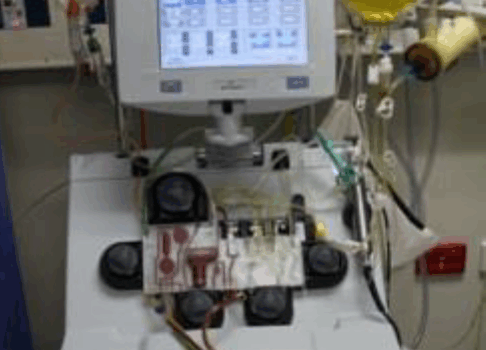
The European Atherosclerosis Society (EAS) has published a new consensus statement on lipoprotein(a)1 which recognises the substantial body of evidence from genetic, epidemiological and Mendelian randomisation studies that has been built up since the first consensus paper was published.2
The risk for myocardial infarction (MI) increases at Lp(a) levels above the 75th percentile, whereas higher levels are associated with other clinical outcomes such as ischaemic stroke and heart failure.1 Importantly, elevated Lp(a) concentration is a risk factor for atherosclerotic cardiovascular disease (ASCVD) outcomes in both men and women and in different ethnic groups.3-5 These findings establish elevated Lp(a) concentration as a global risk factor for ASCVD. Importantly, genetic and Mendelian randomization studies have also been crucial in ruling out an association between elevated Lp(a) concentration and risk for venous thrombosis.
Continuous risk
One of the new messages from this consensus statement is that the association between Lp(a) concentration and ASCVD outcomes is continuous, countering the previous concept of a threshold for Lp(a) levels.1,6 For the clinic, the consensus paper takes a pragmatic view, suggesting Lp(a) cut-offs to ‘rule out’ (<30 mg/dL or <75 nmol/L) or ‘rule-in’ (>50 mg/dL or >125 nmol/L) risk. For individuals in the ‘grey’ zone (i.e. 30–50 mg/dL; 75–125 nmol/l) other risk factors are relevant for risk stratification.1
Another key message from this consensus statement is the impact of the interaction between Lp(a) and other risk factors on global risk. The statement underlines the need to take account of both the Lp(a) level and the baseline absolute global cardiovascular risk of the individual. For example, an Lp(a) level of 100 mg/dL (∼250 nmol/l) approximately doubles the risk of ASCVD outcomes; however, for individuals with higher baseline global risk, the increase in absolute risk is greater (for example, from 20% to 40% rather than from 5% to 10% for individuals with lower baseline global risk).1
Measuring Lp(a)
Testing and measurement of Lp(a) are other areas of clinical concern that are dealt with by the consensus statement. As in the 2019 European Society of Cardiology/EAS dyslipidaemia guidelines,1 the consensus panel recommends testing Lp(a) at least once during adult life.
Screening is also recommended in youth with a history of ischaemic stroke or a family history of premature ASCVD or high Lp(a) and no other identifiable risk factors.1 Lp(a) testing may need to be repeated in youth as levels increase until adulthood. Cascade testing of Lp(a) is recommended in individuals with familial hypercholesterolaemia, family history of (very) high Lp(a), and personal or family history of ASCVD.1 Measurement of Lp(a) has posed concerns in practice, especially in interpreting different units (mg/dL or nmol/L). The consensus panel provides recommendations for standardising Lp(a) measurement for the future. In the interim, the panel does not recommend using a standard factor to convert between mg/dL and nmol/L. A best guess for when both units are used in clinical practice is 2–2.5 (mg/dL to nmol/L) (1).
Management of elevated Lp(a)
The key question facing clinicians is how to manage the patient with elevated Lp(a) concentration. The consensus statement provides practical guidance for clinicians on how to intensify the management of other major risk factors – such as LDL cholesterol – in order to mitigate the effects on global risk associated with elevated Lp(a). An easy-to-use online Lp(a) risk and benefit algorithm provides convenient and specific guidance on this, depending on the age at which LDL cholesterol lowering is initiated.1 Such interventions should be started as early as possible. Lipoprotein apheresis can be considered in patients with very high Lp(a) and progressive cardiovascular disease despite optimal management of risk factors.
However, specific Lp(a)-lowering agents are on the horizon. These include pelacarsen, an antisense oligonucleotide targeting apolipoprotein(a), and two siRNA agents, olpasiran and SLN360. These have been shown to be highly effective in lowering elevated Lp(a) levels in clinical trials.7-9 Pelacarsen is most advanced in development, with a late-stage trial investigating whether lowering elevated Lp(a) can reduce cardiovascular events in high-risk individuals (Lp(a)HORIZON trial; NCT04023552).
Ongoing uncertainty
The consensus panel acknowledges areas of ongoing uncertainty about Lp(a). These include the possibility of a link between very low Lp(a) levels and risk for diabetes. A meta-analysis of all available studies performed by the consensus panel showed a 38% (95% CI 29–48%, p<0.0001) higher risk for the bottom quintile (thresholds <3 to 5 mg/dL) vs. top quintile of Lp(a) (thresholds >27 to 55 mg/dL) with no significant heterogeneity across studies.1
However, much uncertainty persists about the underlying mechanisms or whether this relates to Lp(a) or other factors. For trials of specific Lp(a)-lowering therapies, it is unlikely that this will be relevant, as most patients will require very high Lp(a) levels for trial entry and are unlikely to attain very low Lp(a) levels (<5 mg/dL).
Additional areas of uncertainty relate to aortic valve disease. Subsequent to the first Lp(a) consensus,2 there is now extensive evidence that elevated Lp(a) concentration is associated with increased risk for aortic valve stenosis (AVS).10,11 This has important clinical implications, given that AVS, an increasingly prevalent condition in ageing societies,12 is perhaps the last major cardiovascular condition lacking medical therapy for slowing disease progression. However, what stage of the disease to target in clinical trials, and which endpoints to assess, are contentious. Additionally, as highlighted by the consensus panel, there are outstanding questions about the underlying mechanisms of pathogenicity of Lp(a).
This 2022 EAS Lp(a) consensus paper is an important contribution to the Lp(a) field. Results from ongoing trials are the critical test of the Lp(a) hypothesis: Does lowering elevated Lp(a) levels in high-risk patients reduce cardiovascular events?
References
- Kronenberg F, Mora S, Stroes ESG, et al. Lipoprotein(a) in atherosclerotic cardiovascular disease and aortic stenosis: a European Atherosclerosis Society consensus statement. Eur Heart J 2022; 43: 3925-3946
- Nordestgaard BG, Chapman MJ, Ray K, et al; European Atherosclerosis Society Consensus Panel. Lipoprotein(a) as a cardiovascular risk factor: current status. Eur Heart J 2010;31:2844-53.
- Nordestgaard BG, Langsted A. Lipoprotein (a) as a cause of cardiovascular disease: insights from epidemiology, genetics, and biology. J Lipid Res 2016;57:1953-75.
- Patel AP, Wang M, Pirruccello JP, et al. Lp(a) (Lipoprotein(a)) Concentrations and Incident Atherosclerotic Cardiovascular Disease: New Insights From a Large National Biobank. Arterioscler Thromb Vasc Biol 2021;41:465-74.
- Mehta A, Jain V, Saeed A, et al. Lipoprotein(a) and ethnicities. Atherosclerosis 2022;349:42-52.
- Mach F, Baigent C, Catapano AL, et al. 2019 ESC/EAS Guidelines for the management of dyslipidaemias: lipid modification to reduce cardiovascular risk. Eur Heart J 2020;41:111-88.
- Tsimikas S, Karwatowska-Prokopczuk E, Gouni-Berthold I, et al. Lipoprotein(a) Reduction in Persons with Cardiovascular Disease. N Engl J Med 2020;382:244-55.
- Koren MJ, Moriarty PM, Baum SJ, et al. Preclinical development and phase 1 trial of a novel siRNA targeting lipoprotein(a). Nat Med 2022;28:96-103.
- Nissen SE, Wolski K, Balog C, et al. Single Ascending Dose Study of a Short Interfering RNA Targeting Lipoprotein(a) Production in Individuals With Elevated Plasma Lipoprotein(a) Levels. JAMA. 2022;327:1679-87.
- Thanassoulis G, Campbell CY, Owens DS, et al. Genetic associations with valvular calcification and aortic stenosis. N Engl J Med 2013;368:503-12.
- Kamstrup PR, Tybjaerg-Hansen A, Nordestgaard BG. Elevated lipoprotein(a) and risk of aortic valve stenosis in the general population. J Am Coll Cardiol 2014;63:470-7.
- Goody PR, Hosen MR, Christmann D, et al. Aortic Valve Stenosis: From Basic Mechanisms to Novel Therapeutic Targets. Arterioscler Thromb Vasc Biol 2020;40:885-900.







